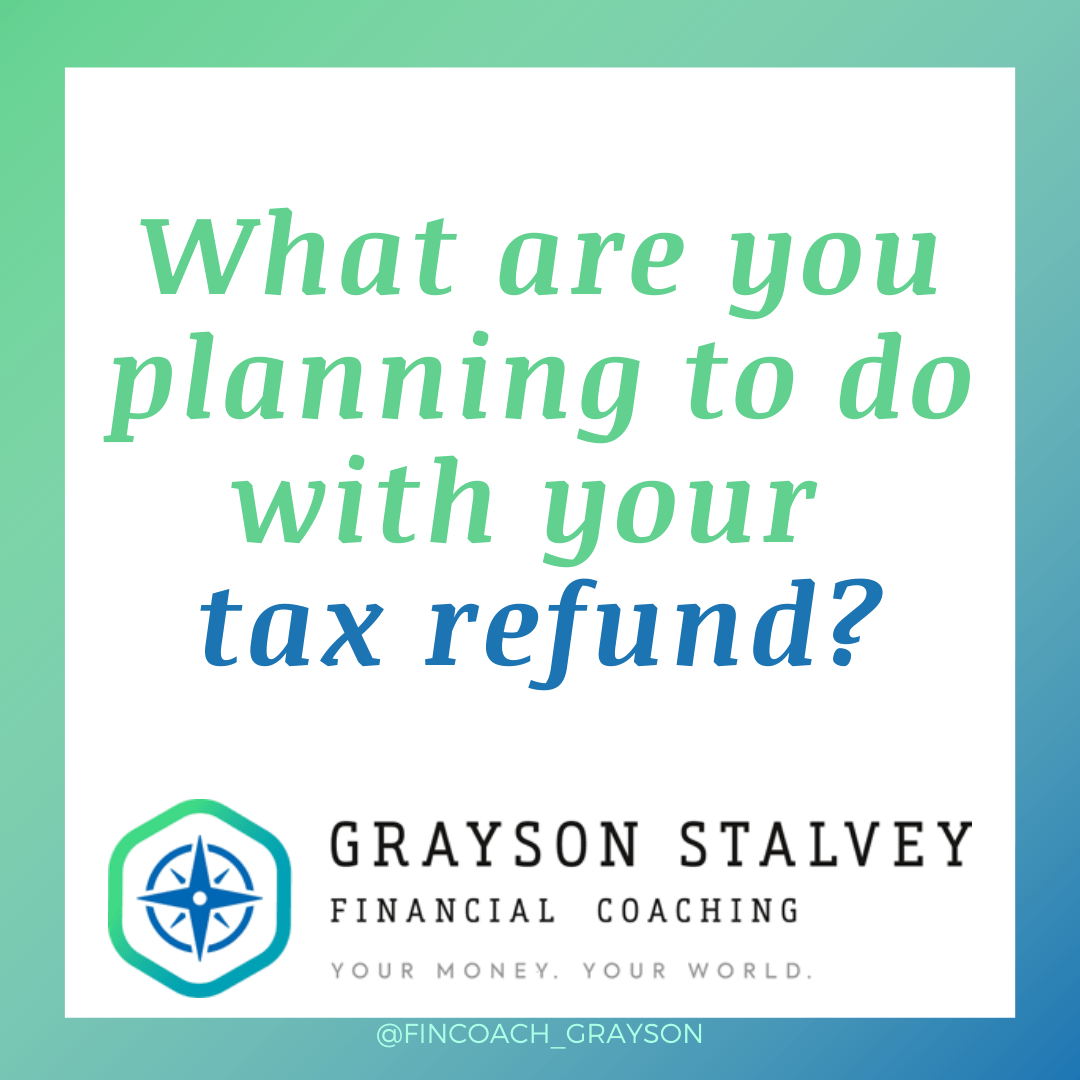
Have you ever Googled “How to budget?”
I just did. There were 1.7 BILLION search results. Think about that number. Now imagine you’ve made a commitment to yourself that you’re ready to start doing better with your money, but you’re not sure where to start.
So you jump on the old Google box and search and find 1.7 billion website.
Woah.
That’s what happened to me in 2008 when I made the decision to stop creating debt and to start building wealth instead. But there was SO MUCH INFORMATION out there. I was overwhelmed. I had a mini-panic attack. I read article after article after article, system after system after system. Most of them had the same skeleton, the basics were the same with little tweaks here and there.
But they were just different enough that when I read a new one, I’d be ready to throw away the work I had already done to try this new shiny system I’d just read about.
I must have created my first budget more than 10 times.
And then I got so frustrated that I just gave up.
I came back to it eventually, because my WHY was strong enough, but I look back at it now and think about how I could’ve made it so much easier.
How I could have cut through the noise.
The fact of the matter is, 99% of the 1.7 billion articles on budgeting will do the trick. They’ll be perfectly fine for you. Some may be better than others, but the reality is that the only wrong way to budget is to not budget.
If you’re struggling to get started, just pick an article and implement it. Then give it a chance. Don’t run to the next shiny system you read about. Give it a couple of months and see the impact it has on your money.
Once you get in the swing of things, once you’ve created a budget and stuck with it for a few months, THEN you can start trying to tweak it and get fancy.
If you’re reading this and you’re ready to get started, click here to grab my Quick Start Budget Guide, cut through the noise, and just get started.
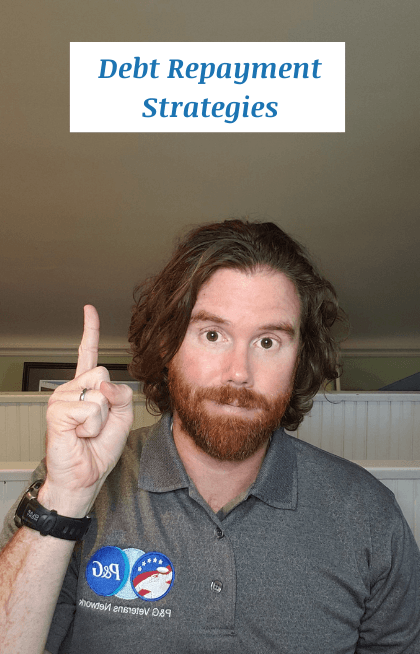
What’s your debt repayment strategy? If someone had asked me that 13 years ago, I’d probably just have stared at them until I mumbled something about just paying it and then walking away.
I didn’t have any type of strategy at all when I first got serious about paying off my debt. I figured I’d just make the minimum payments for the rest of my life, because why would you spend any more money than that on debt?
Once I got serious and realized that I didn’t actually want to be in debt the rest of my life, the topic of a debt repayment strategy got a lot more interesting.
There are a number of different strategies for paying off debt. Two of the most common are the debt snowball and the debt avalanche. Let’s discuss.
The Debt Snowball was made famous by Dave Ramsey. The basic gist is that you list out all of your debts from smallest balance to largest. When you make your budget, you plan on making the minimum payment on all of your debts. Any extra money you have each month gets thrown at the debt at the top of your list, the one with the smallest balance. Once that debt is paid off, you roll that minimum payment into the next debt on your list. As you pay off debts, your payments “snowball” into bigger and bigger payments until next thing you know your debt is gone.
Next is the Debt Avalanche. It’s pretty similar to the Debt Snowball, except instead of listing your debts in order from smallest balance to largest, you list them from highest interest rate to lowest. Mathematically, this is the most efficient way to pay off your debt. You’ll spend less money on interest and will spend less time in debt paying it off this way.
When it comes down to it, you need to know your personality. Do you need quick and easy wins at the beginning to keep you motivated? If your highest interest rate debt is tens of thousands of dollars, will you be able to stick with the plan if it takes you a year or two to pay off your first debt?
Figure out your motivation, then choose the debt repayment option that works best for you.

I failed an awful lot when I first started on my financial journey. Back in 2008 when I first started trying to be better with money, I didn’t know how to budget. I didn’t have anything fancy, no programs or spreadsheets or anything. In fact, my very first budget from July 2008 is literally just a .txt notepad file. It was ugly and clunky.
It wasn’t pretty, but I eventually did have an actual budget. And I still failed. I was terrible at staying within the budget I set for myself. I’d get to the end of the month and tally everything up and find that I spent way too much money on eating out and entertainment and the like.
Eventually I realized that the problem was that I was waiting until the end of the month to see what I spent. I wasn’t tracking my expenses as I went along.
Once I figured that out, it got a lot easier. I updated my spending periodically throughout the month, and that way I was able to see how I was doing. Did I spend three quarters of my eating out budget the first week of the month? Time to cut back a bit. Was it almost the end of the month and I still had a pretty hefty entertainment budget left? Maybe it’s ok to splurge on a night out. When you take note of where you are DURING the month, you’re able to make changes to your spending patterns to compensate.
When it comes to actually tracking your expenses, there are a number of ways to do it. There are plenty of apps out there (Mint, Every Dollar, You Need A Budget) that can help you. You can use a spreadsheet (or use a .txt file!) to keep track of everything. If you’re using plastic to pay for everything you can log onto your bank account and download a list of your expenses. Or you can go old school and just carry around a note pad and a pencil and just write down every time you spend money!
Regardless of HOW you choose to do it, the goal is to be able to account for every single dollar that leaves your checking account.
If making a budget is the planning part of things, tracking your expenses is the execution!
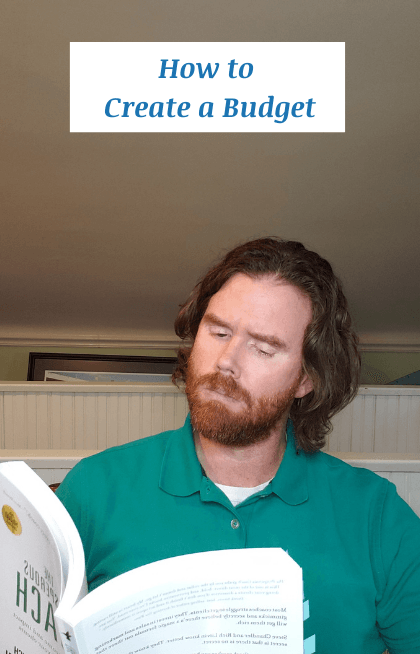
When I first started trying to take control over my money it was a bit of a mess. I had no clue where to start. I knew I needed to make a budget, but I had no idea how to actually do that.
When I googled it, it was information overload. There was so much information out there that it was hard not to be overcome with analysis by paralysis.
It was a lot for me to personally overcome just to get started. So now I want to share with you what I did learn. Cut out all of the noise and get down to the basics: how do you budget?
You start out with your income. How much money will you make during the month you’re budgeting for? For a lot of people this is pretty straightforward. For those with variable income, it’s a little more difficult. If you’ve got a variable income, you want to go with your worst-case scenario income. A good way to figure that out is look at your last 12 months. What was the worst income month? Use that as your baseline income going forward. That way, if you can make your budget work with your worst-case income, you’re golden. In your worst month you know you’ll be covered, and if your income is more than that, you’ve got extra to figure out what to do with (and that’s a lot more fun to do than to overestimate your income and then try to figure out where you’re going to cut your budget to make it work!).
Next you want to list your expenses. There are 9 main broad categories that I recommend you budget for: Giving, Saving OR Debt, Household, Shelter, Utilities, Transportation, Insurance, Children and Discretionary.
When you’re done allocating your money, your income minus your expenses should equal 0. If your expenses are more than your income you’ve got work to do. You need to either cut some expenses of increase your income, otherwise you’re going backwards! If your income is more than your expenses, even better! Give the rest of that money a job. I recommend paying off more debt or saving more.
That’s the basics of creating your budget. If you’re having trouble with that, I’ve got a tool coming soon that will help. My Quick Start Budgeting Tool simplifies this even more. You just enter your income and it tells you how much to allocate for each of those categories. It doesn’t get much simpler than that! Keep an eye out, it’ll be dropping in early October, and best of all, it’s FREE!
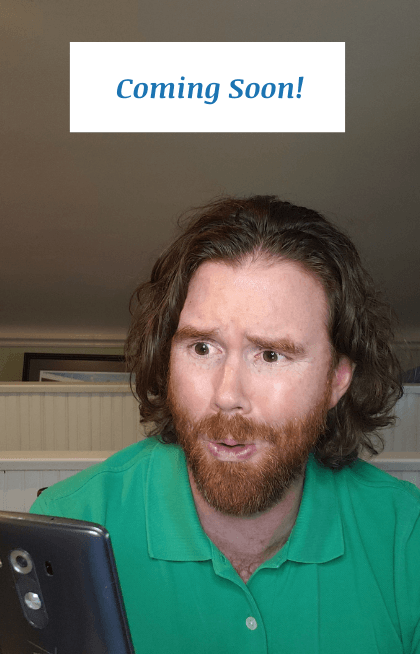
During the summer of 2008 I decided that I needed to flip my money script. Up until then I had been terrible with money, living well outside of my means and racking up nearly $40,000 in debt.
I knew the basics. I needed to create a budget, I needed to track my expenses and I needed a plan to get out of debt, but that was about it. I didn’t actually know how to create a budget. I didn’t actually know the best way to track my expenses. I didn’t have any type of strategy to pay off my debt.
When I first googled “how to budget” it was information overload (I just searched again…1.7 BILLION results). How do you dig through all of that to find real information? How do you cut through the noise? It was enough to almost make me want to give up before I even got started!
I don’t remember how many articles I read, but it was a lot. I must have started making that first budget 10 different times. Looking back, I realize I should have just picked something and gone with it instead of obsessing about making it perfect the first time out, but that’s not the way I was thinking about it.
I remember that struggle vividly. Now, as financial coach, my first meeting with my clients is a deep dive into their budget. We go into it line item by line item so they leave that first session with a workable plan from the get go.
But what about everyone else I interact with but don’t end up becoming clients? I want to be able to help them, too. That’s why I’m excited to roll out my new Quick Start Budgeting Tool next month! This easy to use tool is perfect for getting a jump start on your budget. You’ll simply enter your income and it will spit out recommended dollar amounts for common budgeting categories, based on the experts’ recommended budgeting percentages.
And best of all? This tool is going to be 100%, absolutely free.
I can’t wait to share it with everyone!
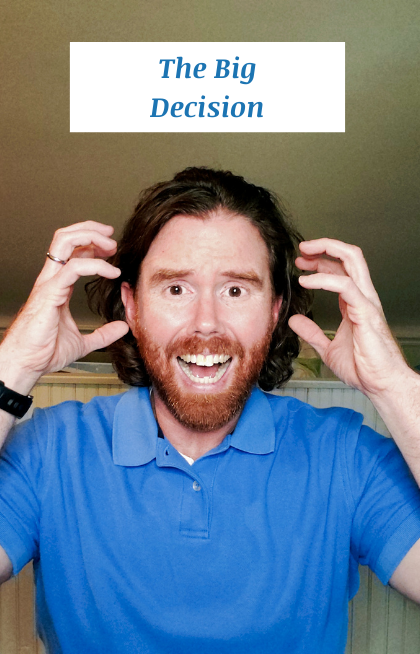
In April 2020 I made one of the biggest decisions of my life. I walked away from a secure, well-paying job in order to follow my passion and run my own busines full-time.
In some ways it was an incredibly hard decision to make. In other ways, there’s never been an easier decision in my life.
When I got out of the Coast Guard in 2017 and joined corporate America, it became clear to me pretty early that it wasn’t for me long term. Initially I thought that we could save up a ton of money and retire early. We sat down and crunched the numbers and figured that in 10 years we could save up enough money where we didn’t NEED to work anymore.
That single-minded focus on making money put a strain on our lives and on our relationship. I lost focus for a while on what was important, like my relationship with my wife and my children.
Then I found out about financial coaching and everything changed. This is what I wanted to do with my life. I was certain that I could make coaching a full-time job, but Tamar wasn’t convinced. We started looking at what needed to be true in order for us to feel comfortable with my leaving my well-paying corporate job to coach full-time. We laid out some metrics: how much income I needed to be brining in, how many clients I needed to have, etc. We looked at how much money I’d need to make in order for us to continue saving towards our goals.
I kept working hard, burning the candles at both ends. Working at my day job until 5 or 6, then going home and working on my side hustle until late into the night. It was rough, but in my mind it was all going to be worth it.
In February this year I was selected to attend the Veteran’s Entrepreneurship Program at Oklahoma State University. A few months of distance learning culminated with 8 days of intense, entrepreneurial bootcamp in Stillwater. It was an incredible experience. I came back home full of renewed energy and excitement about being a coach, and I had so much confidence in my ability to continue to grow and build this business.
We hadn’t quite hit the goals we had set in order for me to do start coaching full time, but I knew the time was right. To strike while the iron was hot. After some deep conversation and soul searching, my wife and I agreed that it was time. I put in my notice and left my cushy corporate job to be a full time Financial Coach on April 3, 2020.
Since then we’ve zipped past the goals we had initially set, and it continues to grow. I’m so incredibly blessed to be able to do what I do, and I’m so grateful that you’re here with me!

I used to be pretty bad with money. When I first started out on my own, I racked up nearly $40,000 in debt in just a few years. It was pretty impressive how quickly I was able to spend money that I didn’t have.
My thought pattern changed when I met the woman that I was going to marry. I knew I had to do better if I was going to be able to support the family that I wanted to have with her. I couldn’t carry on spending above my means. So I set out to flip my money script.
It was hard work. It didn’t come easy at all. First there was information overload. Then there was the frustration when things didn’t go to plan. There were many times on my debt free journey when I felt like I just wanted to quit.
I didn’t know what financial coaching was back then. I didn’t know that there were people who would work with me to help me figure out what was important to me, then teach me how to use my money on those things. I didn’t know there were people who could help me come up with a plan to reduce both the amount of time it would take me to get out of debt as well as the amount of interest I’d be paying.
If I had been able to work with a financial coach, that frustration I felt trying to figure things out, the frustration of not making as much progress as I thought I should be would’ve been speed bumps instead of mountains.
I got to where I wanted to be eventually, but it wasn’t easy. It could’ve been so much easier!
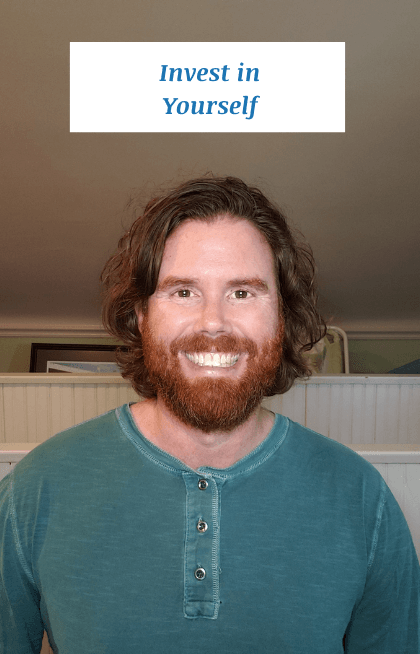
When I started coaching people on how to win with their money in January 2019, I was full of energy and excitement. I had finally found what I wanted to be when I grew up and this was the culmination of all the hard work I put into it over the previous year.
My first clients weren’t even paying clients…they were friends and friends of friends who agreed to work with me so I could gain experience. Good thing, too. I would have felt pretty bad about taking their money based on the product I was providing them!
Those first sessions, I look back at them now and cringe a bit. I had a general outline of what we were going to do, but it was very much fly by the seat of my pants with each meeting. I didn’t have a process and I certainly didn’t have flow.
Now, that’s not to say that my clients didn’t end up doing great things. Those three clients paid off nearly $40,000 during our time working together, which is incredible! I really struggled with imposter syndrome early on, though. I didn’t feel polished. I didn’t feel professional.
I wasn’t content to rest on my laurels. When I’m interviewing potential new clients, once of my qualifying criteria is that I want clients to bring me challenges, so that I continue to grow as a coach.
So when I wasn’t happy with my process at the beginning, I sought out advice and instruction on how to fine-tune it. There were two big decisions I made that went a long way towards erasing the doubts I had about myself.
The first one was joining a community of financial coaches online. A group where I could bring my questions and concerns and seek advice and input from people who have been in my shoes. This helped me realize that I didn’t need to reinvent the wheel with every new client I had!
Second, a few months after that, I invested in more training for myself to make myself a better coach. You see, my initial training focused heavily on how to coach. It was very situational and transactional. What I was missing was the systems and processes. I was missing how to be more efficient and consistent with the background stuff, when I’m not face to face with clients. Getting more training there wasn’t cheap, but it was worth it. My confidence and my professionalism soared.
If there are areas in your life where you know you’re lacking, consider an investment in yourself. It can make all the difference in the world!

In my last post I talked about the article that changed my life. After I left the Coast Guard I ended up in corporate America, making pretty decent money but generally unhappy with the work I was doing. There was something missing, a purpose in my life.
I found that article about financial coaching and it started me down the path to where I am now: a full-time financial coach and a small business owner.
I’ve mentioned my propensity for starting projects and never finishing them. How I get REALLY excited about something and dive head first into it, only to lose steam after a little while and moving on to whatever catches my eye next. That explains my wife’s reaction when I excitedly told her that I wanted to be a financial coach.
There was something about this, though. I knew it wasn’t going to be just another project, that this was going to be something big. The deeper that I’d dig, the more I learned about what coaching was and how to do it, the more convinced I became that this was what I was supposed to be doing.
I’ve taken some time recently to reflect on exactly HOW I knew this was different.
I felt like I’d been missing purpose for the work that I was doing since I left the Coast Guard. As I read about what financial coaching was and how it impacted lives, it just made sense to me. If you’re not familiar, the essence of what I do as a coach is this: I help you figure out what’s really important to you in life, then I teach you how to put your money toward those things. I help you come up with a plan to get from where you are now to where you want to be, and then I walk that path with you as an accountability partner and guide.
Those words, they resonate with me. I get a tingle in my spine when I hear them. There’s power behind them, because of the promise they offer. The ability to change people’s lives for the better. To do things with their money that they never thought possible. I felt a tugging in my gut, in my heart. I felt like I was being called to guide people through this journey for themselves.
I’ve felt validated every step of the way. From one of my very first clients who paid off her student loans in under a year. From the couple that was convinced that they’d never be able to simply live within their means who are now set to be completely debt free in the next 4 years, which will enable them to follow THEIR calling. To the couple who were able to erase years of money and marriage mistakes and are now walking down the path hand in hand, their relationship and their finances stronger than ever.
I love being a financial coach.
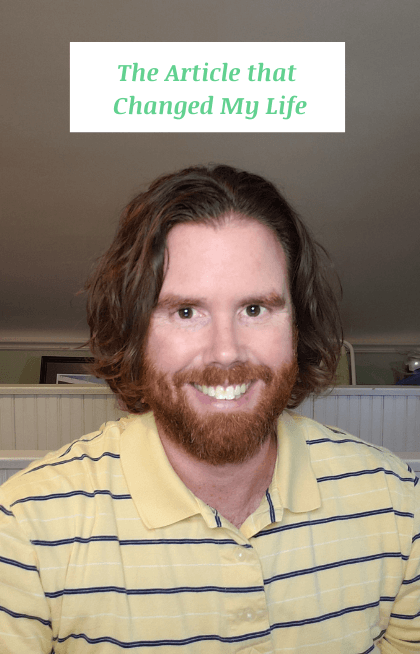
When I got out of the Coast Guard in 2017 I wasn’t really sure what I wanted to do with my life. My initial instincts took me to the finance world where I looked at banking and becoming a financial advisor. I quickly found out that being a financial advisor wasn’t what I had in mind when I thought about helping people with their finances, and the banking world honestly just didn’t excite me very much. I ended up in corporate America buying raw and packaging materials for one of the largest consumer goods companies in the US.
It wasn’t a bad job. The people I worked with were incredible, but I found the work itself…lacking. It turns out, I wasn’t adequately prepared for lack of purpose in my life once I took off my uniform. When I was in the Coast Guard, even on the worst day, at the worst command, with the worst leadership, I always knew the good that was coming from what we were doing. From what I was doing. I struggled with that in corporate America. So I started searching for that fulfillment. That sense of purpose.
In early 2018 I found an article about financial coaching. Before this, I hadn’t heard the term before, I didn’t know what a financial coach was or that the term even existed. I read this article and everything clicked. It was like a lightbulb went off in my head.
The article was intense. And long. It broke down what a financial coach was, how the different business models work, and finally a really in depth look at how to become a financial coach. I ate it all up. I took in depth notes. I was on a mission.
I remember rushing into the living room to tell Tamar about the article and about financial coaching. I felt like a kid in a candy shop, I was so excited! As I gushed on and on about it, Tamar sat there patiently, just nodding. Honesty time: I have a tendency to get really excited about things, charge hard into it, and lose steam over time. That is to say, I start a lot of projects, but I don’t finish most of them. So Tamar played along and indulged my excitement, but it was obvious that she was skeptical about this ever becoming a real thing for me.
That article became my guide over the next few months as I shifted my free time into this. I started meeting other financial coaches and asking them about their journey, how they became coaches. I took Ramsey Solutions’ Financial Coach Master Training and got the basic building blocks set up for how to be a coach. I launched in January 2019 taking on my first three clients for free, just to build experience.
Those first couple of session were rough, not gonna lie. My process was clunky, I wasn’t very confident, but my clients got results. And that pumped me up! Over time momentum grew. I signed my first paying clients. My business became profitable from month to month. I reached my overall breakeven point, where my coaching practice made more money than I spent becoming a coach. And all along the way I was helping people do incredible things with their money and achieve things they barely dared to dream were possible.
Back in April I said goodbye to Corporate America and became a full-time financial coach. I finally found that purpose in my work that had been missing since I left the Coast Guard. There are a lot of different factors that enabled this to happen, but that article was what kicked it all off. It changed my life.

